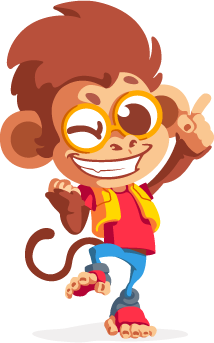Escola Games | Jogos Educativos
https://www.escolagames.com.br
Teacher's support sheet

Catching Letters
Is it time to get some fish… or some letters?
Help the bear to catch letters to form words!
In this game, you learn and have fun! Form the words according to the drawing on the screen. It is time to practice what you know!

Teacher's tips
Level of education: Elementary School
Age: 06 to 08 years old
This game encourages reflection on how the writing system works during the literacy phase. Children will have to “fish” for letters to form words, having to think about the way we speak and the way we write, establishing relationships and expanding knowledge. In this game, the child must form the word from the letters that pass through the river. She will have multiple chances to get all the letters of each word right. [FIM-DICA]
Learner outcomes
Understand the use of the alphabet in the construction of words;
Form words from the letters that are submerged in the river;
Compare words;
Understand the word structure process;
Develop the ability to put syllables together to form words;
Associate the word with the image;
Identify and differentiate the letters of the alphabet;
Memorize the conventional writing of words;
Develop attention and concentration;
Develop motor coordination;
Recognize the written and sound differences of words;
Develop, improve and advance reading and writing;
Fix knowledge acquired in the classroom;
Teachers' goals
Work on students' reading and writing skills;
Provide, in a playful and creative way, the progress in the reading and writing process of children;
Offer a playful and pleasurable proposal that allows the student to associate letters with their spelling;
Offer the game as a didactic resource to fix the content worked in the classroom;
Expand the class's repertoire of letters and words;
To favor the understanding of the construction process of words through the letters;
Suggestions of approaches for the teacher
(Suggestion 1) Divide the class into pairs according to the objectives for this lesson. It is important to highlight the writing possibilities of each child, so that the exchange of knowledge between them advances in learning. During the game, one should help and participate in the other's move, exchanging knowledge and ideas. Students should record the words that appeared in the moves to use them in other proposals in the classroom.
(Suggestion 2) Form a sentence with the words;
(Suggestion 3) Write words that have the same initial;
(Suggestion 4) Write words that have the same final letter;
(Suggestion 5) Mark the vowels in one color and the consonants in another;
(Suggestion 6) Separate the words into syllables;
(Suggestion 7) Sort according to the number of syllables;
(Suggestion 8) Classify according to the stressed syllable;
(Hint 9) Word dictation;
(Suggestion 10) Count the number of letters and look in magazines for words that have the same number of letters;
(Suggestion 11) Promoting activities of assembling and disassembling words with the movable alphabet, with letters made of paper, plastic or wood, allow the learner to experience, in a very rich way, a series of decisions about how to write.
(Suggestion 12) Unscramble words;
(Suggestion 13) Complete songs. Play the music until the end, without interruptions, the second time stop the music and ask the students to complete with the missing word or phrase.
(Suggestion 14) Use memory game with letters.
(Suggestion 15) Ask the students to gather caps from PET bottles, then cut and paste each letter of the alphabet inside the caps, distribute them to the students and ask them to form words and then sentences. Letters can also be formed using pieces of cardboard (shoeboxes, milk cartons, etc.). This activity can be worked on in an interdisciplinary way with the science teacher, addressing the topic Recycling/reuse.
More about the content
Ludicity is not only about learning and teaching in a pleasant way, but it is also a methodology for teaching students with learning difficulties, that is, inclusion in the classroom. In these and other cases, diversifying teaching methods is a very effective action. Be sure to update yourself and always bring news and fun activities to your class, this is very important to keep your students engaged. Online games offer an excellent alternative in this process. That is, when the teacher manages to use ludicity to teach in the classroom, he can obtain surprising results in the literacy and literacy process of the students. Among the many positive aspects observed are:
Development of cognitive ability;
Boosting curiosity and discoveries;
Provides empirical knowledge;
Reinforces and fixes learning;
Uses elements of the child's daily life;
Generates greater well-being;
Builds a positive memory;
Creates a greater relationship with what is being learned;
